Maladjusted, Part II: How the U.S. Air Force Went from Eagle to Chicken
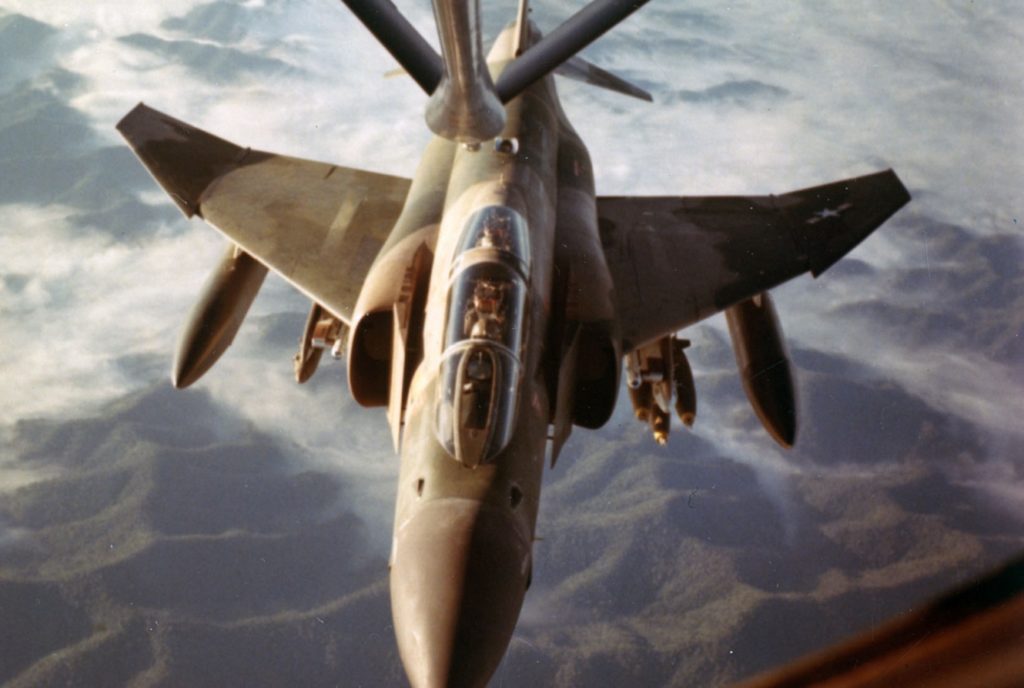
Editor’s Note: Please read the first installment in this series, “21st Century Attack.”
In 1964, the Air Force officially entered the war in Vietnam. And they did so with the wrong mix of tactical airpower. The fighter force of the time bore little resemblance to an actual fighter force. It consisted largely of leftover Korean-era relics, interceptors designed to fight Soviet bombers, and “fighters” designed for a nuclear strike role. Blinded by the perceived need to engage in a massive nuclear exchange with the Soviets, the Air Force leadership of the time had built a combat aviation enterprise that was largely unsuited for anything short of nuclear war. Vietnam quickly proved this. The Air Force adapted, and did so at an impressive pace. Within five years, it added new fighters as well as attack and observation aircraft for service in Vietnam – all with new capabilities. This explosive growth increased the inventory by over 1200 aircraft, more than offsetting the 1000 tactical aircraft lost in that same time period. This was the eagle at its best, making a sharp turn to adjust to the reality of Vietnam, and incidentally laying the groundwork for the aircraft that would face the Soviets in the Cold War.
Half a century later, the Air Force encountered the same conundrum. Its high-end fighter force was designed for a climactic battle with the Soviets over Europe. By 2001, when the Air Force deployed aircraft to fight in Afghanistan, it was ending purchases of the F-15E and F-16, had no observation aircraft in the inventory, and wouldn’t produce another multi-role fighter for more than a decade. Its last attack aircraft purchase had ended in 1984. By 2001, the Air Force had been at war continuously for ten years, having sustained multi-theater, continuous combat operations since January 16, 1991. The Air Force was ripe for recapitalization, replacement, and reconstruction. But that didn’t happen.
Instead of adding aircraft, it continued its drawdown. Instead of investing in attack and observation aircraft, it attempted to retire the one attack aircraft it did have. The end result has been a fighter/attack fleet that is smaller, older, and less ready than at any time in the Air Force’s history. The eagle had become a chicken, and it was entirely self-inflicted. But there are hints that the eagle is coming back.
Vietnam: Innovation and Adjustment
When the Air Force officially entered Vietnam in 1964, the backbone of the fighter force consisted of the “Century-series” fighters (F-100 through F-106), and hundreds of derivatives of the Korean War-era F-86 sabre, mostly relegated to Air Defense Command. The F-105 Thunderchief, ironically touted as the “most advanced” fighter ever procured, was a straight-line, single-engine behemoth designed to deliver a nuclear weapon from its internal bomb bay. The Air Force didn’t have an attack aircraft to its name, and the strength of its observation fleet was five. (Yes, that’s right. Just five O-1 Bird Dog aircraft – a militarized Cessna 305.) The F-100 was obsolescent when it was committed to combat, and the rest of the century series were designed as interceptors, not fighter-bombers, save for the F-105. The F-105 was the backbone of the fighter force, and almost half of the F-105s built were lost in combat or in accidents. It was the wrong force for the war and airmen paid heavily.
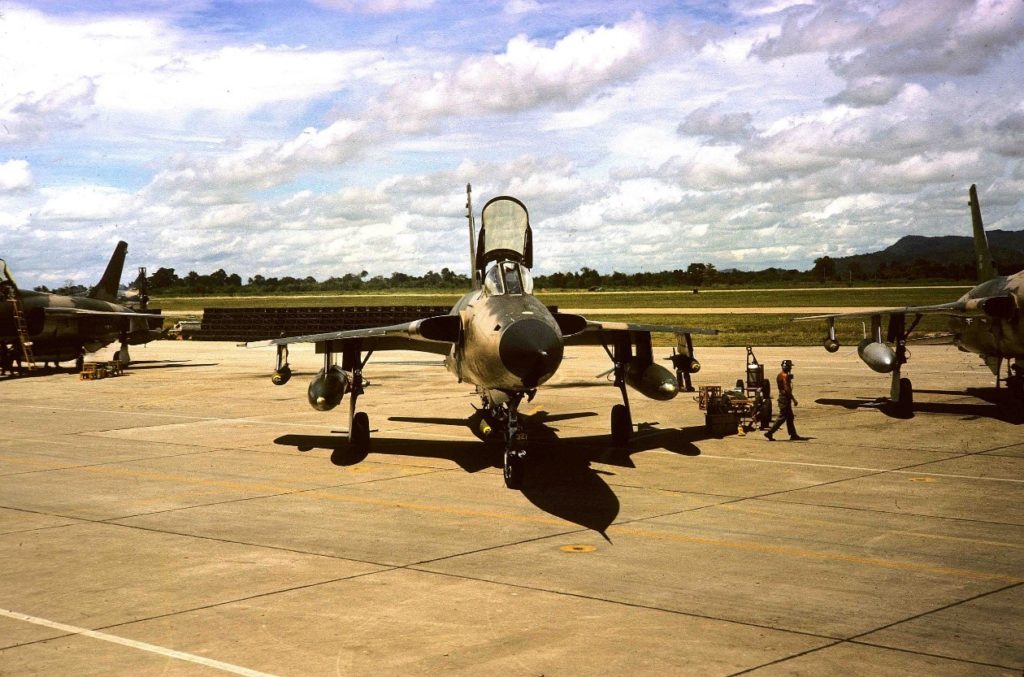
To their credit, Air Force leaders reacted rapidly. Between 1964 and 1969, the Air Force added numbers of O-1, O-2, and OV-10 observation/forward air control aircraft, turning five into 509 with even more on the way. Zero attack aircraft became a combination of A-37, A-1, and A-26 numbering 260, with the A-7D entering production and the A-X program (which would become the A-10) in full swing. For every F-100, F-101, F-102, and F-105 lost or retired, the Air Force procured 1.2 modern F-4 Phantom II – not including the 329 recce Phantoms added in that timeframe. Experimentation efforts demonstrated capabilities in the field in combat, resulting in follow-on aircraft procurement in large numbers. Of the combat demonstrations between 1965 and 1968, only Operation Combat Lancer (the first introduction of the F-111A) was unsuccessful, (and due to horizontal stabilizer failures, not enemy action).
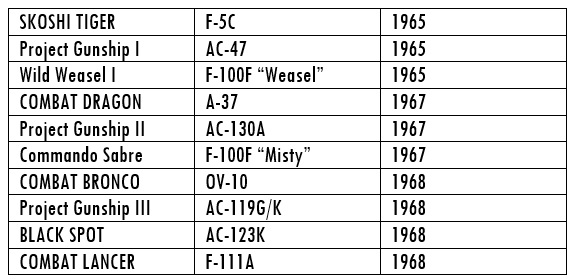
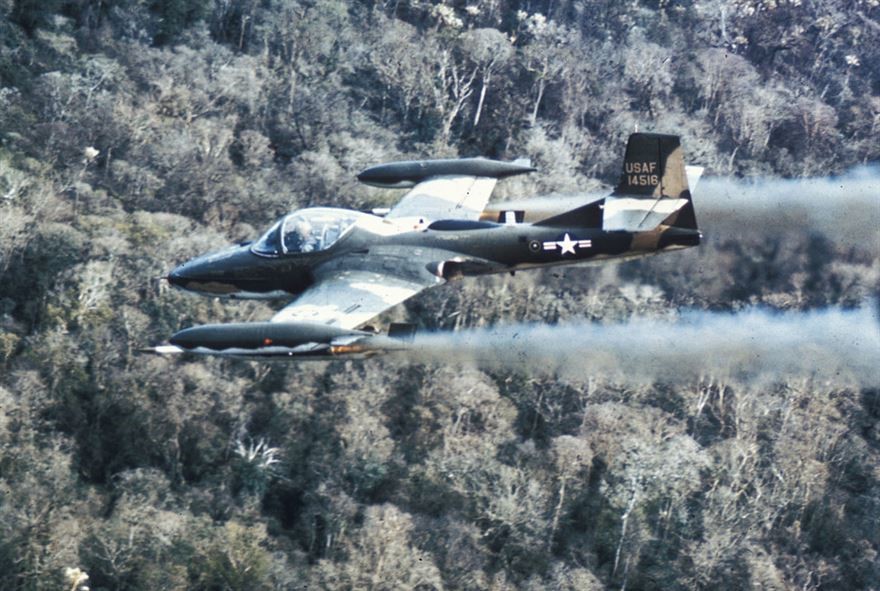
The Air Force responded to the Vietnam challenge by adding aircraft and aircraft types that were relevant to the conflict, divesting interceptors and obsolete aircraft. In 1969, the Air Force had five open production lines for fighter/attack aircraft alone, not one of which had been open in 1961. Some aircraft types went through multiple stages of improvement – the AC-130A led to the AC-130E, the O-1 was replaced by the O-2 and OV-10, the F-100F Wild Weasel I replaced by the F-105F, F-105G and EF-4C. By the fall of Saigon in 1975 (after the United States had been out of Vietnam for two years), a decade of investment had reduced the Century-series strength from over 95 percent of the fighter/attack force to less than a third. That was the eagle in action.
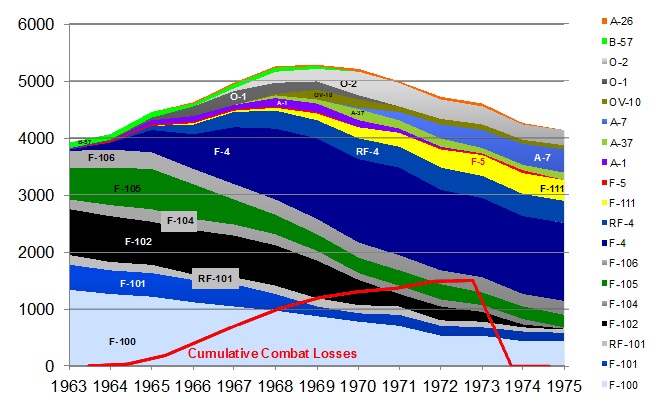
The Long War: Stuck in Cruise Control
Contrast this with the experience of the last few years. By the time of the 9/11 attacks, the Air Force and Naval aviation had been at war continuously since the opening minutes of Desert Storm. That same year saw the last delivery of the F-16 and the last contract to build F-15Es for the Air Force. Despite the fact that the policing of the Iraqi and Balkan no-fly zones had been going on for a decade, the “major” combat operations in the Gulf and over Serbia had been short and intense. There was reason to believe that Operation Enduring Freedom would end rapidly. It didn’t, and soon Operation Iraqi Freedom was added to the mix. By 2004, when the Air Force had expected to be over and done with combat operations, it was involved in two open-ended conflicts with increasing demand for airpower. But the “plan” had been set years before, and two wars were not enough reason to deviate and buy a new aircraft just for the existing conflicts. Not only would the imperative for new aircraft be ignored, but the Air Force would continue to retire its existing fleet and delay upgrades on the aircraft we kept. Only the F-22 and the F-35 remained in production – aircraft designed to excel in the war we weren’t fighting.
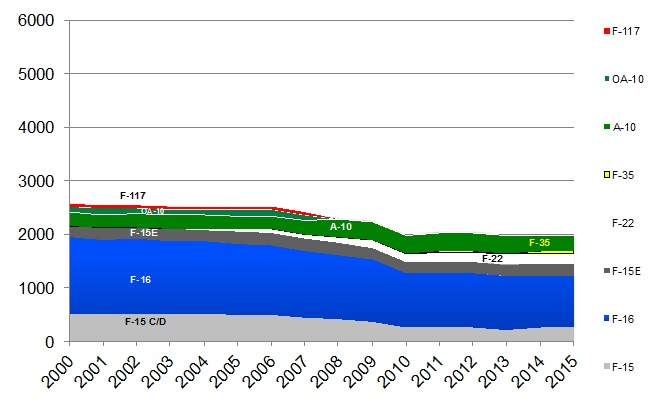
Not only was the combat air force mismatched for the wars we were actually fighting, but even by 2000 it was too small to begin with. The so-called “peace dividend” post-Cold War saw the United States cash in its fighter force as if it was time to go home. The Air Force saw its combat-coded fighters drop from 3170 in 1990 to 1801 by 1995. Even the oldest of the post-Vietnam fighters are much more capable than any of the Vietnam era aircraft, and the aircrew are better trained. But it would be harder to argue that the aircrew are more proficient (because of the historically low number of flying hours). It would be impossible to make the case that an aircraft can be in two places at once. This truth bore out in the real world where deployment followed deployment – readiness dropped, aircraft aged, and the sustainment costs climbed. It even led to a staggeringly unsuccessful game of chicken between Air Combat Command and Congress in 2013, resulting in the grounding of 17 fighter squadrons (roughly 400 aircraft) – an effect that Soviet generals would have traded their beloved babushkas for if they could have achieved it in 1989.
Shortages didn’t stop with aircraft or flying hours. As counterintuitive as it may seem, the Air Force suffers from a fighter pilot shortage because it is too small. The fighter/attack numbers are insufficient to sustain the Air Force’s requirement for experienced fighter pilots because we don’t have enough planes or enough flying hours to season new pilots. By 2013, the Air Force was over 200 pilots short – and even the incremental efforts to improve absorption hadn’t stopped the bleeding. Even slashing pilot staff requirements by 25% from 2004 to 2015 and leaving staff positions unfilled didn’t stop the gap from widening. There was no getting to a solution without addressing the fundamental problem: too few aircraft. The unwillingness to buy aircraft that weren’t at the bleeding edge wasn’t just a force size problem, and it was spawning subsidiary problems that defy solution.
Today, the chicken has come home to roost. Our more expensive aircraft have come with more expensive flying hour costs, making fewer aircraft cost more to operate and to purchase. The F-35 has broken a long trend – the airplane that is being delivered today is less capable, more expensive and costlier to maintain than the aircraft it replaces. The “long war” has become the “forever war.” The Air Force is bleeding itself dry trying to prepare for a future war without ever addressing a crisis that has been brewing for 25 years. It’s time to begin embracing the techniques that it used to get itself out of the last mess driven by the wrong aircraft and an inappropriate concept. Where once a sharp-taloned eagle surveyed potential prey from a lofty perch, today the little blue-uniformed chicken pecks away at funding crumbs, eyes firmly on its own feet. (To be fair, the chicken is intensely dissatisfied, and looking to reinvent itself.)
The Fix
There is an obvious fix: buy more aircraft. Buy aircraft that are cheaper to purchase, cheaper to operate, and tailored to the challenges of the Long War. Sure, it may not be possible for lower-cost aircraft to do all of the things that a modern fighter does, but so what? The vast majority of combat sorties for the vast majority of the past quarter century have been in airspace that was lightly contested at best. The Air Force has spent 176 days in that timeframe in contested airspace – and as of writing this, over 9400 calendar days outside it. If you count simultaneous operations like the no-fly zones over Northern Iraq, Southern Iraq and the Balkans as separate events, the total count of permissive days exceeds 17,000. And in that timeframe, the United States has not built a single new manned combat aircraft for the environment.
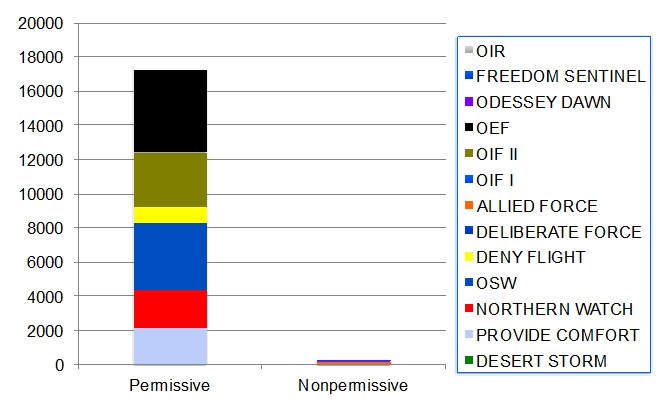
Several years ago I argued for renewed purchase of a high-low fighter mix (including light attack) in an article that resulted in no small amount of ass chewing. The points made still stand – the value of a high-low mix has been conclusively demonstrated, and we cannot rely entirely on aircraft that are costly to buy and maintain. There is certainly a place for less costly and less capable aircraft with a design philosophy focused on the wars we are actually fighting – and have been.
That’s a very hard decision. It’s a major change of direction for the Air Force. It’s a bitter pill to swallow for a service that institutionally prefers to have the newest and best, and has previously been able to afford very expensive tastes. But there is no shame in adjusting the plan for conditions that didn’t exist when the plan was devised – it’s supposed to be the standard. Even if the adjustment comes later than it might, it would be no more than a recognition that the demands on combat airpower have been greater than expected, for longer than expected, and there is no end in sight. Indeed, buying attack aircraft might very well preserve the F-35 fleet from the fate shared by its predecessors – flying the wings off in low-intensity conflicts where the advanced fighter is an absurd overmatch.
Can it be done? It has been done. We need look no further than the last decade-long war to find the way to do it. Despite the shrinking of the U.S. industrial base, there are offerings available which could allow us to do exactly what we did with the A-1, A-37 and A-7D a generation ago, namely procure nondevelopmental aircraft, convert an existing jet, and/or buy an interim solution while we work out the details of a new-build design. More tails on the ramp means more ability to season pilots and more aircraft to spread over the unending deployment demand. Multi-role aircraft tailored for the long war means lower operating costs, shorter development timelines, and perhaps even different basing operations and lower logistical demands. The Air Force embraced a flexible mix of aircraft in the 1960s, and did it again in the 1970s. If the eagle can turn into a chicken, the chicken can surely make the effort to turn back.
Col. Mike “Starbaby” Pietrucha was an instructor electronic warfare officer in the F-4G Wild Weasel and the F-15E Strike Eagle, amassing 156 combat missions over Iraq and the Former Republic of Yugoslavia and taking part in 2.5 SAM kills over 10 combat deployments. As an irregular warfare operations officer, Colonel Pietrucha has two additional combat deployments in the company of US Army infantry, combat engineer, and military police units in Iraq and Afghanistan. The views expressed are those of the author and do not necessarily reflect the official policy or position of the Department of the Air Force or the U.S. government.

